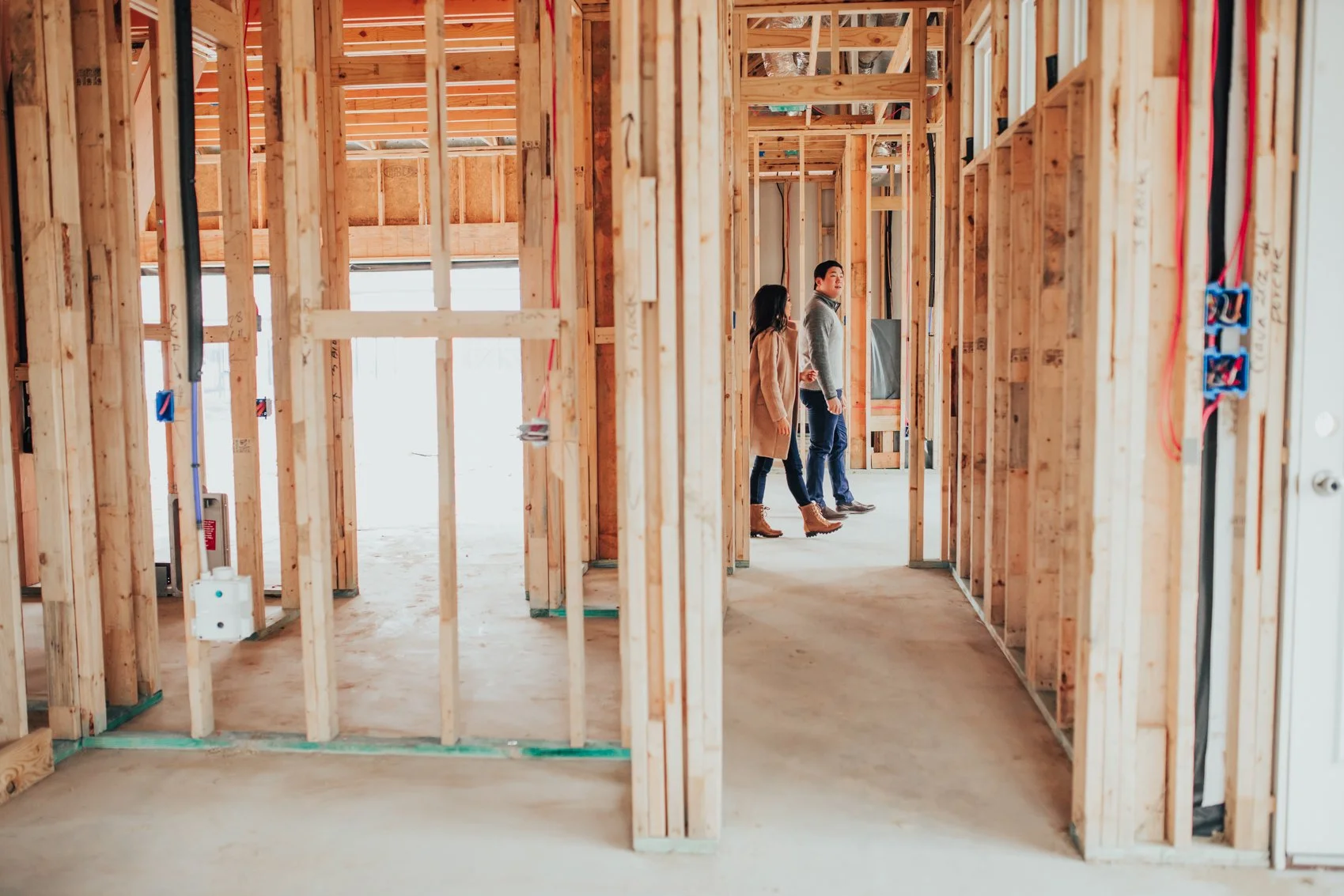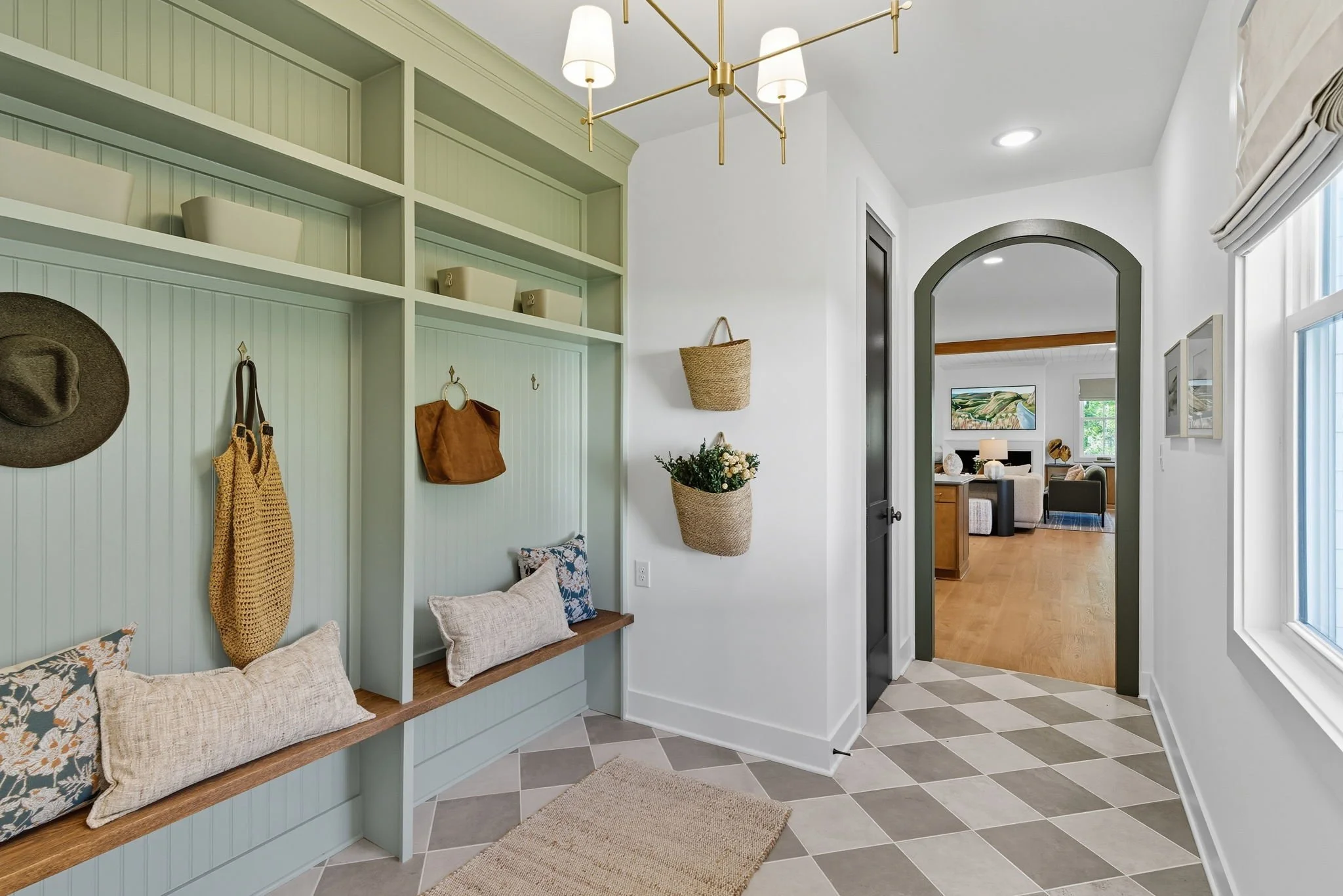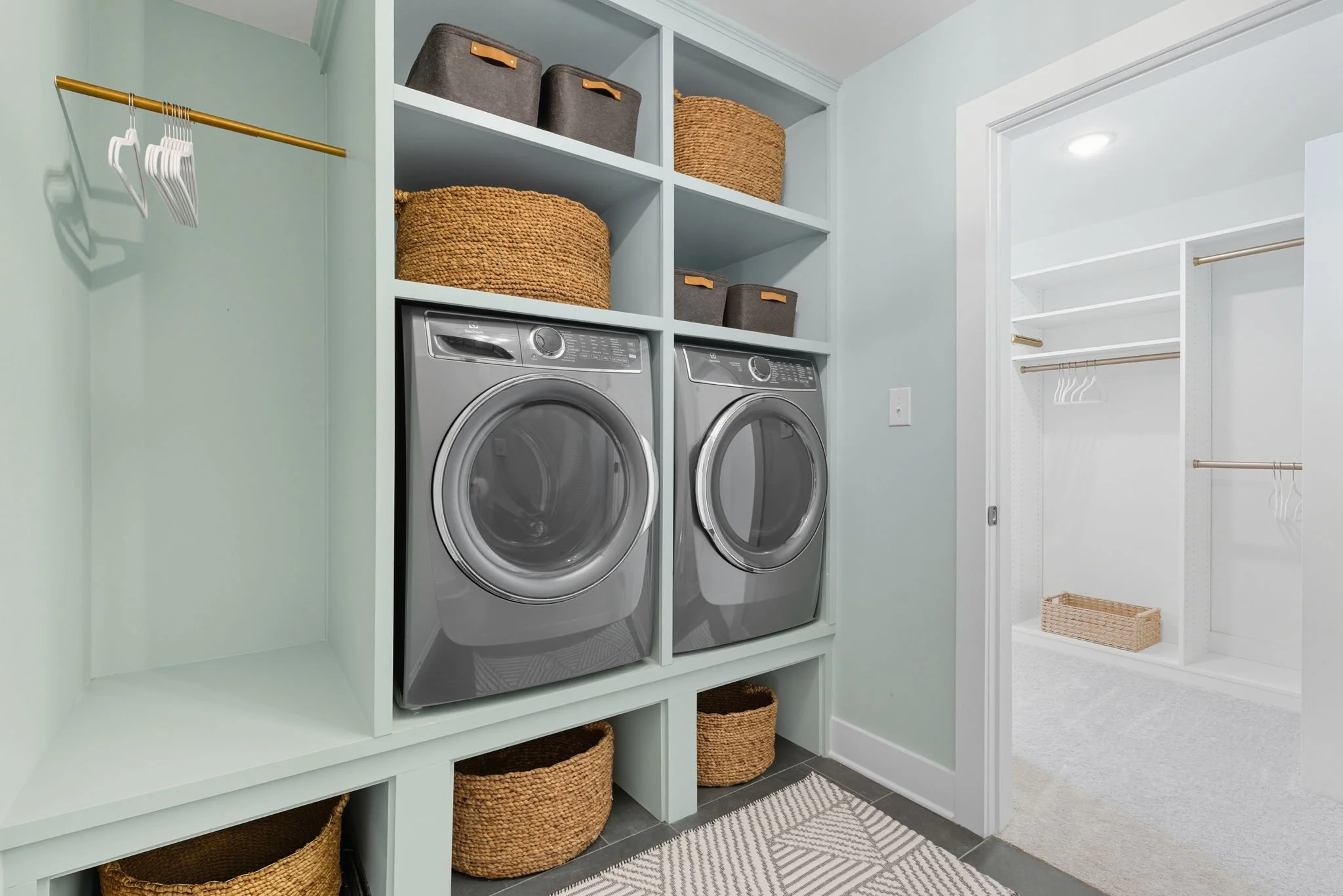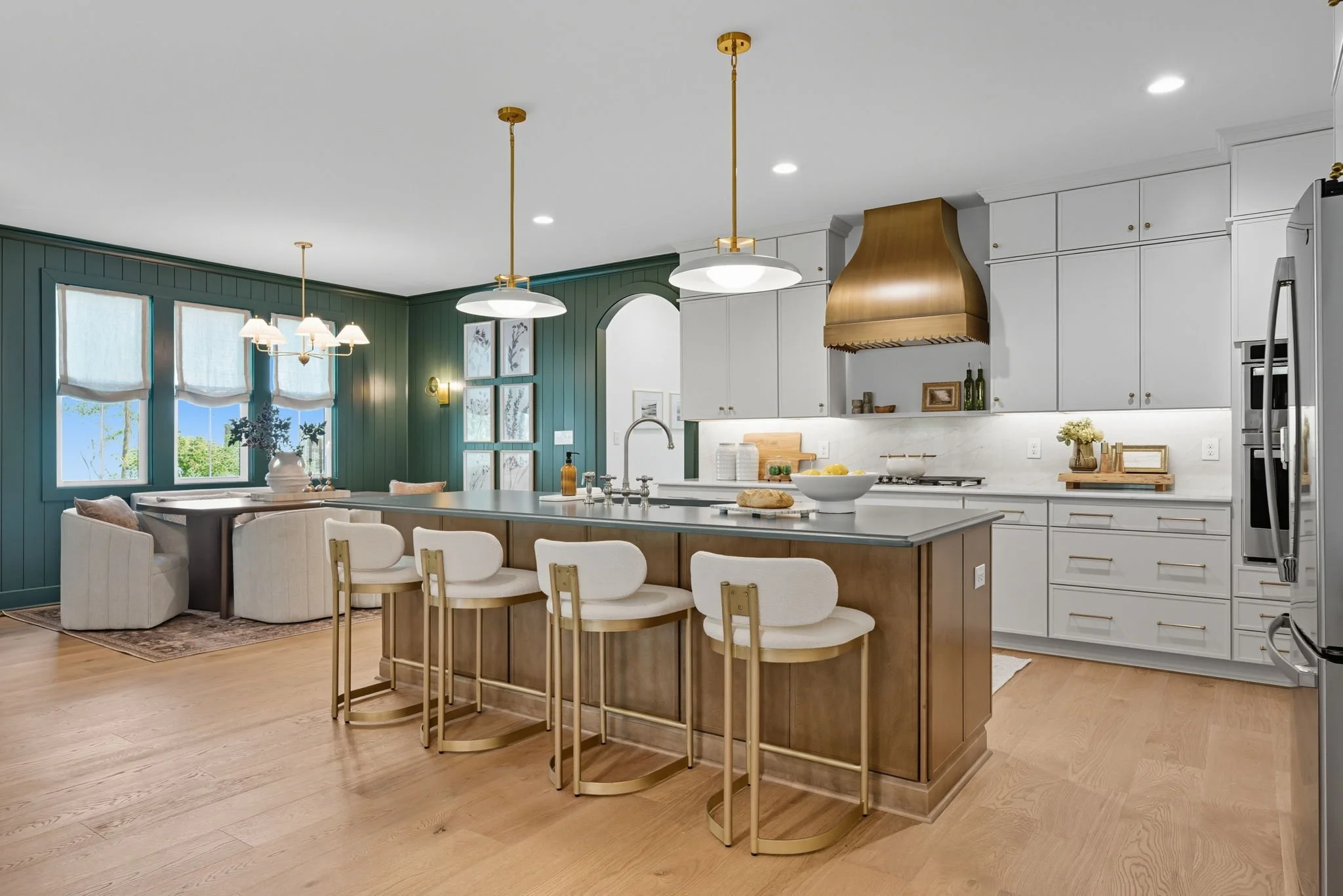7 Mistakes to Avoid When Building Your First Custom Home in Virginia
Picture this: You're three months into building your dream home on that perfect lot in Powhatan. Your builder sends a change order that doubles the cost of moving one interior wall. Your timeline just extended by six weeks. And you're wondering, "How did we get here?"
The truth is, this scenario is completely avoidable. In fact, all seven of the most common first-time builder mistakes—from communication breakdowns to choosing the wrong builder—can be prevented when you know what to watch for. And here's the best part: getting it right isn't about perfection. It's about partnership.
Your custom home journey should be one of life's most exciting adventures. Let's make sure it stays that way by learning these lessons the easy way—from others who've walked this path before.
Mistake #1: Failing to Communicate Clearly with Your Builder
Why This Matters: Your dream home exists perfectly in your mind. The challenge? Translating that vision into reality requires crystal-clear communication with your builder. When communication flows smoothly, building becomes exciting. When it doesn't, misunderstandings multiply into mistakes.
Common Communication Gaps: Many first-time builders assume their contractor "gets it" without providing details. They text one team member about electrical changes, another about paint colors, and wonder why things get lost in translation. Important decisions happen verbally on job sites, with no documentation. Questions feel like bothering someone, so they go unasked until it's too late.
One Richmond couple told us they wanted a "bright kitchen." They meant lots of windows. Their builder heard "light-colored cabinets." The result? A kitchen that needed significant redesign after cabinets were ordered.
The Better Way: Great builders establish clear communication channels from day one. Use one centralized platform—like Buildertrend—where all decisions, changes, and questions live in one place. Document everything in writing, even if you discussed it in person. Share inspiration photos early and often; a picture really is worth a thousand words.
Don't hesitate to ask questions. Whether it's "Why is the framing taking longer than expected?" or "Can we review the electrical plan once more?"—your builder should welcome the dialogue. Schedule regular check-ins, not just at major milestones. And celebrate progress together—this is your dream becoming reality!
Success Tip: Great builders welcome questions and updates. If communication feels easy, natural, and transparent, you've found the right team. You should feel informed, not overwhelmed; guided, not guessing.
Mistake #2: Having Unrealistic Timeline or Budget Expectations
Why This Matters: Nothing creates stress faster than expecting to move in by June and learning in May that you're looking at September. Similarly, discovering your dream home costs 30% more than anticipated can force painful compromises. Realistic planning from the start keeps your journey exciting rather than anxiety-inducing.
Setting Realistic Timelines: Here's what Virginia builders know: Design and permits take 3-4 months. Construction runs 6-10 months. That's 10-16 months total from "let's do this" to "welcome home." Yes, you'll see stories of homes built in 6 months, but that's like planning your commute based on 2 AM traffic patterns.
Weather affects timelines—Virginia's rainy springs and surprise winter storms are real. Inspections can back up during busy seasons. Custom items have lead times. These aren't delays; they're reality. The good news? When you plan for 18 months and it takes 16, you feel like you won the lottery. Plan for 10 months and it takes 14? That's four months of frustration.
Budget Planning That Works: Your true budget includes more than the base house price. Site work can vary dramatically—that wooded lot might need $30,000 in tree removal, while the former farmland needs minimal prep. Factor in:
Base house cost
Site work (get specific estimates)
Selections and upgrades
Basic landscaping to prevent erosion
10-15% contingency for surprises and "might-as-wells"
Success Tip: When your timeline and budget are realistic, every phase becomes an exciting step forward. You'll make better decisions when you're not rushed or stressed about money.
Mistake #3: Making Too Many Changes After Breaking Ground
Why This Matters: Changes are part of the custom home process—it's one reason you're building custom! But timing is everything. A change that costs $500 during design might cost $5,000 after framing begins.
The Real Impact of Late Changes: During the design phase, moving a window or adjusting room sizes usually just costs the difference in materials. After permits are pulled, you'll pay for new architectural drawings and resubmission fees. Once framing starts, you're paying to undo work, buy new materials, and redo everything—plus delays that could expose your frame to weather.
The Smart Approach: Invest serious time in the design phase. This is your playground—change everything twice if you need to! Visit model homes to understand room sizes. Walk through friends' homes with a measuring tape. Create detailed inspiration boards for each room. Use painter's tape to mark room dimensions in your current home.
Once you've signed off on plans, make peace with your decisions. Keep a "future projects" list for things you'd love to add later—that outdoor kitchen, the workshop expansion, the basement finishing. These become exciting Phase 2 projects rather than budget-busting change orders.
Success Tip: The design phase is your opportunity to perfect everything. Embrace it fully, then trust your decisions. Remember: you made those choices for good reasons!
Mistake #4: Forgetting About Storage and Long-Term Needs
Why This Matters: The number one regret we hear from homeowners two years after move-in? "We should have added more storage." The second? "We didn't think about how our needs would change." Built-in storage costs a fraction during construction compared to adding it later.
Commonly Forgotten Storage: Think beyond bedroom closets. Where will holiday decorations live? What about sporting equipment, camping gear, or the artificial Christmas tree? Consider:
A pantry that's actually big enough (go 25% larger than you think)
Coat closet near every entrance
Linen closets on bedroom floors (not just in hallways)
Dedicated sports equipment area in garage
Attic flooring for seasonal items
Outdoor storage for lawn equipment
Kitchen drawer organization systems
One local family created a "storage inventory" of their current home before building. "We photographed every closet, cabinet, and storage area, then planned 30% more space. Two years later, it's all being used!"
Planning for the Future: Life changes, and your home should adapt. Will aging parents need a first-floor bedroom? Could that bonus room become a home office permanently? Consider:
First-floor flexibility for accessibility
Bathroom grab bar blocking (easy to add bars later)
Wide hallways and doorways (36" minimum)
Pre-wiring for future elevator or lift
Extra electrical in the garage for future EV charging
Dedicated homework/study spaces as kids grow
Success Tip: Every extra closet, built-in shelf, and storage nook will make you smile daily. Future-you will thank present-you for thinking ahead!
Mistake #5: Skimping on Important Materials or Details
Why This Matters: You'll interact with certain elements of your home multiple times every single day. That kitchen faucet, those interior door handles, the shower fixtures—these aren't just line items in a budget. They're the tactile experience of your home. Saving $2,000 on cabinet quality means 20 years of doors that don't quite close right.
Worth the Investment: Focus your budget on items you'll touch, use, and appreciate daily:
Kitchen cabinets with soft-close drawers—you'll appreciate these every morning at 6 AM
Quality windows and doors—energy efficiency and smooth operation for decades
Hardwood in main living areas—ages beautifully and adds lasting value
Tile in all wet areas—water damage prevention is priceless
Solid-surface countertops—no resealing, no stains, no regrets
Good interior doors—solid core doors feel and sound better
Where You Can Save:
Trendy light fixtures (styles change, easy to swap)
Cabinet hardware (simple upgrade anytime)
Closet organization systems (add later as needs develop)
Decorative plumbing fixtures
Elaborate backsplashes (can upgrade when styles change)
Landscape details (build over time)
Success Tip: When you invest in quality where it matters, your home feels special every single day. You'll never regret good bones and quality basics.
Mistake #6: Ignoring Professional Guidance
Why This Matters: Your builder's team has collectively built hundreds of homes. They've seen what works, what fails, and what homeowners wish they'd done differently. When they make suggestions, it's not to increase costs—it's to ensure you love your home for decades.
Valuable Professional Input Often Overlooked: Site evaluators might recommend additional drainage that seems unnecessary—until they explain how Virginia clay soil behaves in heavy rain. The design team suggests flipping your floor plan to capture morning light and reduce afternoon heat. Your project manager recommends different timing for landscape installation to ensure proper grading.
These aren't just opinions. They're experience-based insights that can save thousands of dollars and prevent years of frustration.
When to Trust the Pros:
Structural recommendations—always err on the side of overbuilding
Site work necessities—water management is critical in Virginia
Timeline realities—they know inspection schedules and weather patterns
Material substitutions—when supply chains fail, trust their alternatives
Safety requirements—code exists for good reasons
Energy efficiency suggestions—they know what actually impacts bills
The Right Approach: Ask questions to understand the "why" behind recommendations. Share your priorities openly—pros can often achieve your goals differently than you imagined. View your building team as partners, not vendors. They want you thrilled with your home; their reputation depends on it.
Success Tip: Great builders like Keel have in-house designers and experts who've solved every challenge before. Their guidance isn't an upsell—it's your advantage.
Mistake #7: Choosing the Wrong Builder
Why This Matters Most: Here's the truth: every other mistake on this list can be prevented by choosing the right builder. The right partner guides you through clear communication, helps set realistic expectations, prevents costly changes, plans for your future, recommends quality where it matters, and shares professional wisdom. This choice sets the tone for your entire 18-month journey.
Red Flags That Should Stop You Cold:
No clear communication system—if they can't explain how you'll stay informed, you won't be
Reluctance to show current projects—transparent builders are proud of their work
Vague or constantly changing prices—professional builders provide detailed estimates
No established selection process—this leads to confusion and delays
Unwillingness to provide references—happy clients love sharing their experience
Pressure tactics—"sign today" pricing means run away today
No online presence or reviews—in 2025, established builders have digital footprints
Learn more warning signs in our post 7 Red Flags to Avoid When Choosing Your Richmond Custom Home Builder
What Great Builders Do Differently: They start with education, not sales pitches. They have established, transparent processes you can understand. Their communication systems keep you informed without overwhelming you. In-house design expertise means seamless coordination. They provide detailed timelines and budgets upfront. They welcome your questions at every phase. Most importantly, they celebrate your milestones with you—this is your dream, and they're honored to build it.
Questions to Ask Every Builder:
How do you keep clients informed during the build?
Can I speak with three recent customers?
What's included in your base price versus upgrades?
How do you handle change orders?
What's your average timeline from contract to closing?
How long have you built in this specific area?
What happens if weather causes delays?
Who will be my main point of contact?
Success Tip: The right builder doesn't just construct your home—they guide you through every decision, prevent costly mistakes, and make the journey enjoyable. When you find a builder who educates rather than sells, communicates clearly, and has proven processes, everything else falls into place.
Your Dream Home Journey Begins with the Right Builder
After helping hundreds of Virginia families avoid these exact mistakes, we know one truth: choosing the right builder changes everything. When you partner with an experienced team that has proven processes, clear communication, and in-house design expertise, building your first custom home becomes the exciting adventure it should be.
At Keel Custom Homes, we've built our entire process around preventing these seven mistakes. Our Buildertrend platform keeps communication crystal clear—no lost texts or forgotten conversations. Our in-house design team helps you make confident decisions during the design phase when changes are easy. Our transparent pricing means no budget surprises. And our years of experience on Virginia lots means we anticipate and prevent problems before they arise.
But most importantly, we understand this is more than constructing a house. It's creating the backdrop for your family's next chapter. Every decision matters, and we're here to ensure you make ones you'll celebrate for years to come.
Ready to build with confidence?
Take the first step toward your custom home with our Cost Calculator—understand your true investment in under 5 minutes. Browse our portfolio of Virginia custom homes. Or simply call us with your questions. We love talking about the possibilities.
Your custom home story should be filled with excitement, not stress. Let's write it together.








